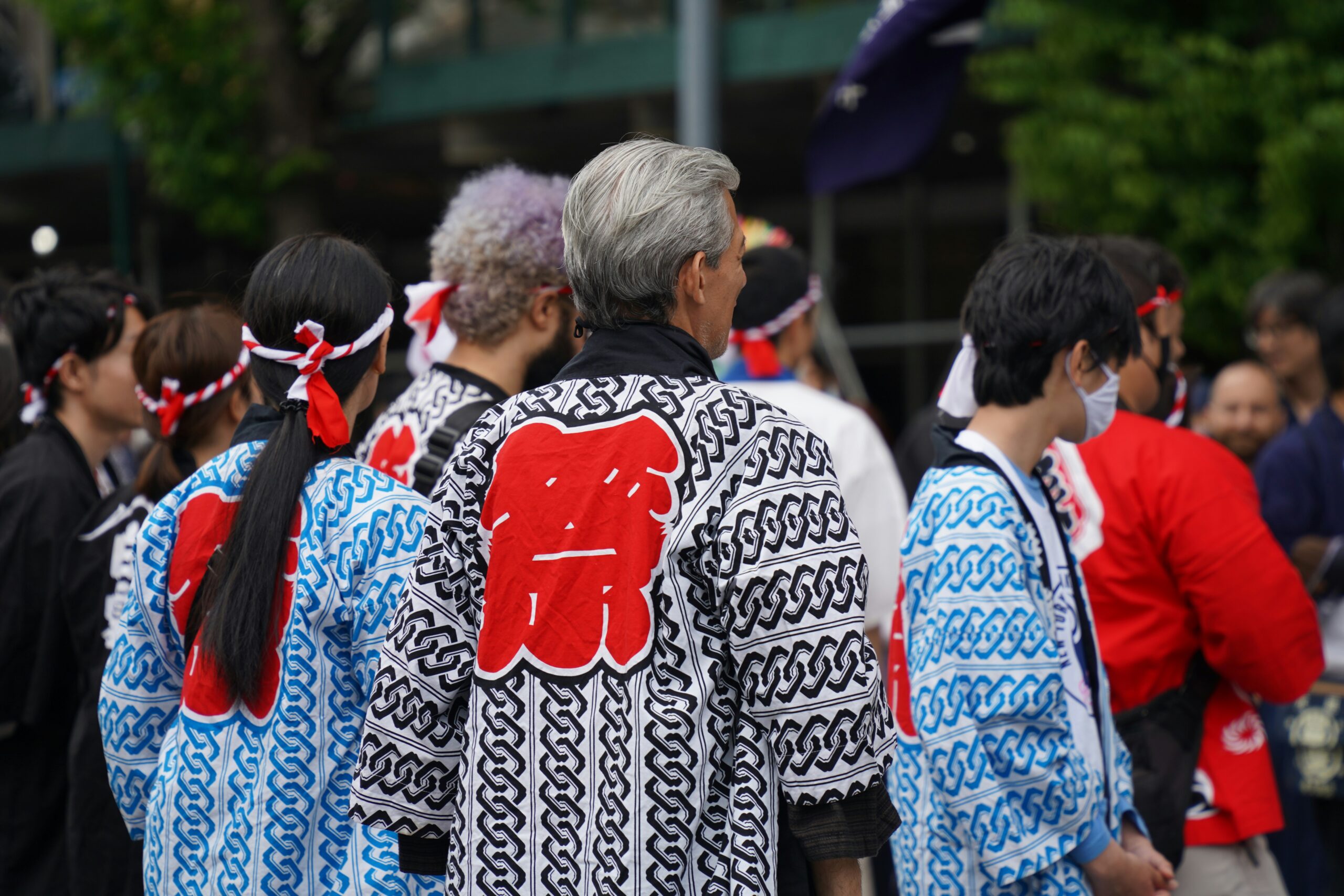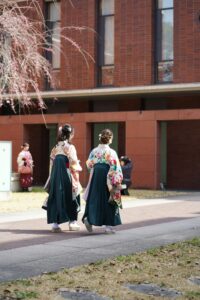In the ever-evolving world of fashion, where trends come and go with the changing seasons, some traditional garments stand the test of time, embracing modernity while staying true to their roots. One such enduring piece is the Haori, Japan’s traditional jacket, which has seamlessly woven itself into the fabric of contemporary style. Originating from the land of the rising sun, the Haori has transcended its historical confines to become a global fashion statement, marrying the rich heritage of Japanese craftsmanship with the dynamic pulse of modern fashion. This article delves into the journey of Haori, exploring its timeless tradition, its evolution into a piece of everyday wear, and its future in the fashion world.
Haori: A Timeless Japanese Tradition
The Haori is a traditional Japanese jacket that exudes elegance and understated style. Originally worn over the Kimono, it served both functional and aesthetic purposes, providing extra warmth and adding an additional layer of beauty to the already sophisticated Kimono ensemble. The history of Haori traces back several centuries, with its origins deeply rooted in Japan’s feudal era. Initially, it was a garment exclusive to the samurai class, symbolizing status and authority. Over time, the Haori evolved, becoming more accessible and eventually a staple in the Japanese wardrobe. Its design, characterized by its T-shaped silhouette, loose sleeves, and open front, has remained largely unchanged, a testament to its timeless appeal.
The Evolution of Haori: From Samurai to Streetwear
The journey of Haori from a symbol of samurai elitism to a contemporary fashion statement is a fascinating tale of adaptation and resilience. As Japan opened up to the Western world during the Meiji Restoration in the late 19th century, the Haori underwent significant transformations. It began to shed its strict social connotations, becoming popular among the masses. In recent years, the Haori has found a new lease on life in the world of streetwear, where its traditional elements are reinterpreted through a modern lens. Designers and fashion-forward individuals alike have embraced the Haori, incorporating it into outfits that straddle the line between tradition and innovation.
How Haori Seamlessly Blends with Modern Fashion
The Haori’s versatility is key to its seamless integration into modern fashion. Its simple, yet elegant design complements a wide range of styles, from casual to formal. Modern renditions of the Haori experiment with fabrics, patterns, and lengths, making it a suitable addition to any wardrobe, irrespective of personal style. Fashion enthusiasts wear it over T-shirts and jeans for a casual look or pair it with more formal attire for a sophisticated ensemble. The Haori’s ability to transcend cultural and stylistic boundaries has cemented its place in the global fashion landscape.
The Artisan Craftsmanship Behind Every Haori
Each Haori is a masterpiece of Japanese artisanal craftsmanship. Traditional Haoris are made using techniques that have been passed down through generations, including weaving, dyeing, and embroidery. The most exquisite Haoris are often hand-sewn and feature intricate designs that tell stories or symbolize aspects of Japanese culture, such as nature, seasons, or folklore. The attention to detail and dedication to quality seen in these traditional garments highlight the deep respect for craftsmanship within Japanese culture, making each Haori not just a piece of clothing, but a work of art.
The Cultural Significance of Haori in Japan
In Japan, the Haori holds a place of cultural significance, embodying the aesthetic sensibilities and values of Japanese tradition. It is more than just a garment; it is a symbol of elegance, respect, and the enduring beauty of Japanese culture. The wearing of Haori at special occasions and ceremonies is a nod to its esteemed status in Japanese society. It represents a bridge between the past and present, reminding wearers and admirers alike of the rich cultural heritage that shapes Japan.
Haori in the West: A Rising Fashion Statement
The allure of the Haori has not been confined to Japan. In the West, it has emerged as a coveted fashion statement, appreciated for its unique blend of tradition, style, and versatility. Fashion designers and enthusiasts in Europe and America have been drawn to its distinctive aesthetic, incorporating it into collections and wardrobes. The Haori’s rise in popularity abroad reflects a growing appreciation for multicultural influences in fashion, as well as a desire for garments that combine history with contemporary appeal.
The Environmental Impact of Sustainable Haori
In an era where sustainability is becoming increasingly important, the Haori stands out for its potential to be an eco-friendly fashion choice. Traditional Haoris, made from natural materials such as silk, cotton, and wool, and using age-old techniques, embody principles of sustainability and minimal environmental impact. Furthermore, the trend towards repurposing vintage Haori jackets aligns with the ethos of sustainable fashion, offering an alternative to the fast fashion cycle. This convergence of tradition and sustainability not only enhances the appeal of the Haori but also contributes to a more environmentally conscious fashion industry.
Styling Tips: Wearing Haori in Contemporary Outfits
Incorporating a Haori into contemporary outfits is a simple yet impactful way to elevate one’s style. For a casual, everyday look, pair a Haori with a plain tee, denim jeans, and sneakers. This combination balances the Haori’s traditional aesthetics with a modern, laid-back vibe. For a more formal setting, layering a Haori over a fitted dress or a shirt and trousers ensemble adds a touch of sophistication. The key to styling a Haori is embracing its fluidity and allowing it to complement the outfit rather than overpower it.
Celebrities and Influencers Embracing Haori
The popularity of the Haori has been further propelled by celebrities and influencers who have embraced its timeless charm. From Hollywood stars to prominent figures in the fashion world, the Haori has been spotted on numerous red carpets and fashion events, styled in a myriad of ways. These endorsements by public figures have played a significant role in introducing the Haori to a wider audience, showcasing its adaptability and appeal across different cultures and fashion sensibilities.
The Future of Haori: Trends and Predictions
The future of Haori looks promising, with trends indicating a continued integration into global fashion. As designers and consumers alike become more adventurous and open to cross-cultural influences, the Haori is poised to gain even more popularity. Innovations in fabric technology and design may lead to new interpretations of the Haori, making it more accessible and suited to a variety of climates and settings. Furthermore, as the fashion industry moves towards more sustainable practices, the traditional methods of creating Haori align perfectly with this shift, promising a garment that is both fashionable and eco-conscious.
Where to Buy Authentic Haori: A Guide
For those looking to purchase an authentic Haori, there are several options. In Japan, specialty stores and vintage shops are treasure troves of high-quality Haori, offering a range of styles from traditional to contemporary. Online, numerous websites and platforms cater to enthusiasts around the world, providing access to a wide selection of Haori. When buying a Haori, it’s important to consider the garment’s fabric, condition, and history, especially if opting for a vintage piece, to ensure authenticity and quality.
Preserving Tradition: The Importance of Haori Today
In a rapidly changing world, the Haori remains a symbol of continuity, bridging the gap between Japan’s rich past and its dynamic present. Its preservation and global appreciation are testament to the enduring appeal of Japanese culture and craftsmanship. As the Haori continues to evolve and adapt, it serves as a reminder of the importance of maintaining cultural heritage while embracing change. For both Japan and the world, the Haori is more than just a garment; it is a piece of living history, a beacon of tradition in the modern age.
The Haori stands as a remarkable example of how traditional garments can find new life in the modern world. From its origins in Japan’s feudal era to its current status as a global fashion icon, the Haori has navigated the complexities of change while maintaining its essence. Its journey reflects a broader narrative about the power of cultural exchange and the timeless appeal of craftsmanship. As it blends with contemporary fashion, the Haori not only enriches our wardrobes but also our understanding of the enduring connections between past and present. In celebrating the Haori, we celebrate a world where tradition and modernity walk hand in hand, creating a tapestry of style that transcends borders and generations.




